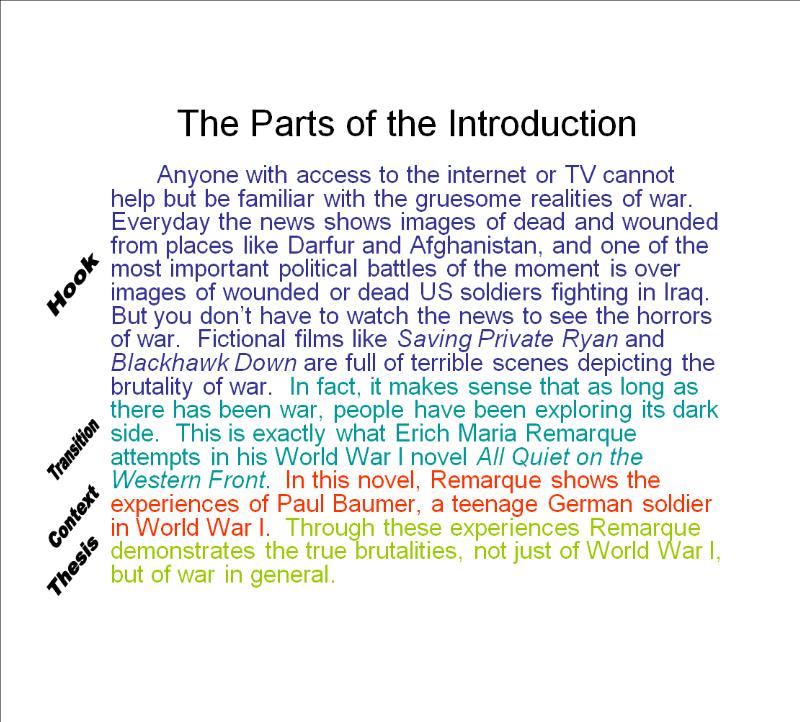Crafting Killer Essay Introductions: Hook Your Reader From the Start
Imagine your essay introduction as the handshake that sets the tone for your entire conversation. A weak, limp handshake? You’ve lost them before you’ve even begun. A firm, confident grasp? Now you have their attention. The introductory paragraph of an essay isn't just a formality; it’s your chance to make a first impression, pique your reader's curiosity, and pave the way for a compelling argument. But what exactly goes into a stellar essay introduction? What are the key ingredients that transform a bland opening into a captivating hook?
The essence of a compelling introduction boils down to a delicate balance of context, intrigue, and clarity. You need to provide enough background information for your reader to understand the context of your essay, while simultaneously sparking their interest and clearly stating your main argument or thesis. This might sound like a tall order, but with a little practice, crafting a killer introduction can become second nature.
Thinking about the history of essay writing can offer some perspective. From the philosophical musings of Montaigne to the persuasive arguments of modern academics, the introduction has always served as the gateway to the writer's thoughts. Its importance lies in its ability to orient the reader, setting the stage for the intellectual journey that lies ahead. Neglecting the introduction, or treating it as a mere afterthought, can lead to a disjointed and ultimately less impactful essay.
One of the main issues writers face when crafting introductions is finding the right balance between breadth and depth. An introduction that is too broad can feel vague and unfocused, while an introduction that is too narrow might jump into the argument too quickly, leaving the reader feeling lost. The key is to provide just enough information to establish the context of your essay without overwhelming the reader with unnecessary details.
So, what components should be incorporated into an effective essay introduction? Generally, it should start with a hook – a captivating statement, question, anecdote, or statistic that grabs the reader’s attention. This is followed by some background information, providing context for your topic. Finally, the introduction culminates in a clear and concise thesis statement, which outlines the main argument or purpose of your essay. It's like setting up the dominoes: the hook knocks down the first one, the background information sets up the chain reaction, and the thesis statement provides the satisfying finale.
A well-crafted introduction offers several significant advantages. First, it enhances readability by providing a roadmap for the reader, ensuring they understand the essay's purpose and direction. Second, a strong introduction increases reader engagement, holding their attention and encouraging them to delve deeper into the essay's content. Third, a clear and concise introduction strengthens the overall impact of the essay by setting a professional and organized tone.
Imagine you're writing an essay about the impact of social media on teenagers. Your hook could be a startling statistic about teenage social media usage. You could then provide some background information on the rise of social media platforms and their growing influence. Finally, your thesis statement could argue that social media has both positive and negative impacts on teenage development.
To craft an engaging introduction, follow these steps: 1. Start with a compelling hook. 2. Provide relevant background information. 3. Clearly state your thesis statement.
Here’s a quick checklist for your essay introductions: Hook? Background information? Thesis statement?
Advantages and Disadvantages of a Strong Essay Introduction
| Advantages | Disadvantages |
|---|---|
| Engages the reader | Can be challenging to write |
| Provides clarity and direction | Requires careful planning |
| Enhances the essay's impact | May require multiple revisions |
Frequently Asked Questions:
1. What is the purpose of an essay introduction? - To introduce the topic and state the main argument.
2. How long should an essay introduction be? - Typically, around 5-10% of the total essay length.
3. What is a thesis statement? - A concise statement of the essay's main argument.
4. What are some examples of effective hooks? - A question, a surprising statistic, a relevant anecdote.
5. Can I include a quote in my introduction? - Yes, if it's relevant and effectively supports your argument.
6. How do I avoid writing a boring introduction? - Start with a captivating hook and avoid generic statements.
7. Should I mention my sources in the introduction? - Generally, no. Focus on introducing your argument.
8. Can I rewrite my introduction after finishing the essay? - Absolutely! It often helps to refine the introduction after the essay is complete.
A few tips and tricks: Don't be afraid to experiment with different types of hooks. Read examples of effective introductions. Revise and refine your introduction until it’s polished and engaging.
In conclusion, a compelling essay introduction is crucial for grabbing your reader's attention, providing context, and setting the stage for a successful argument. By mastering the elements of a strong introduction – the hook, background information, and thesis statement – you can elevate your writing and create essays that are both engaging and impactful. Remember the importance of crafting a captivating opening; it's the first impression that can make or break your essay. Taking the time to carefully plan and write your introduction will not only improve the overall quality of your writing but will also make the writing process itself more enjoyable and rewarding. So, the next time you sit down to write an essay, remember the power of a strong handshake – a captivating introduction that leaves a lasting impression. Spend time brainstorming, experimenting with different approaches, and refining your opening until it shines. Your reader, and your grade, will thank you for it.
Tiktok comments vanishing why you cant see them and what to do
Decoding design from pantone peach fuzz to its digital twin
Croon your way to financial freedom the singer old blue eyes strategy














